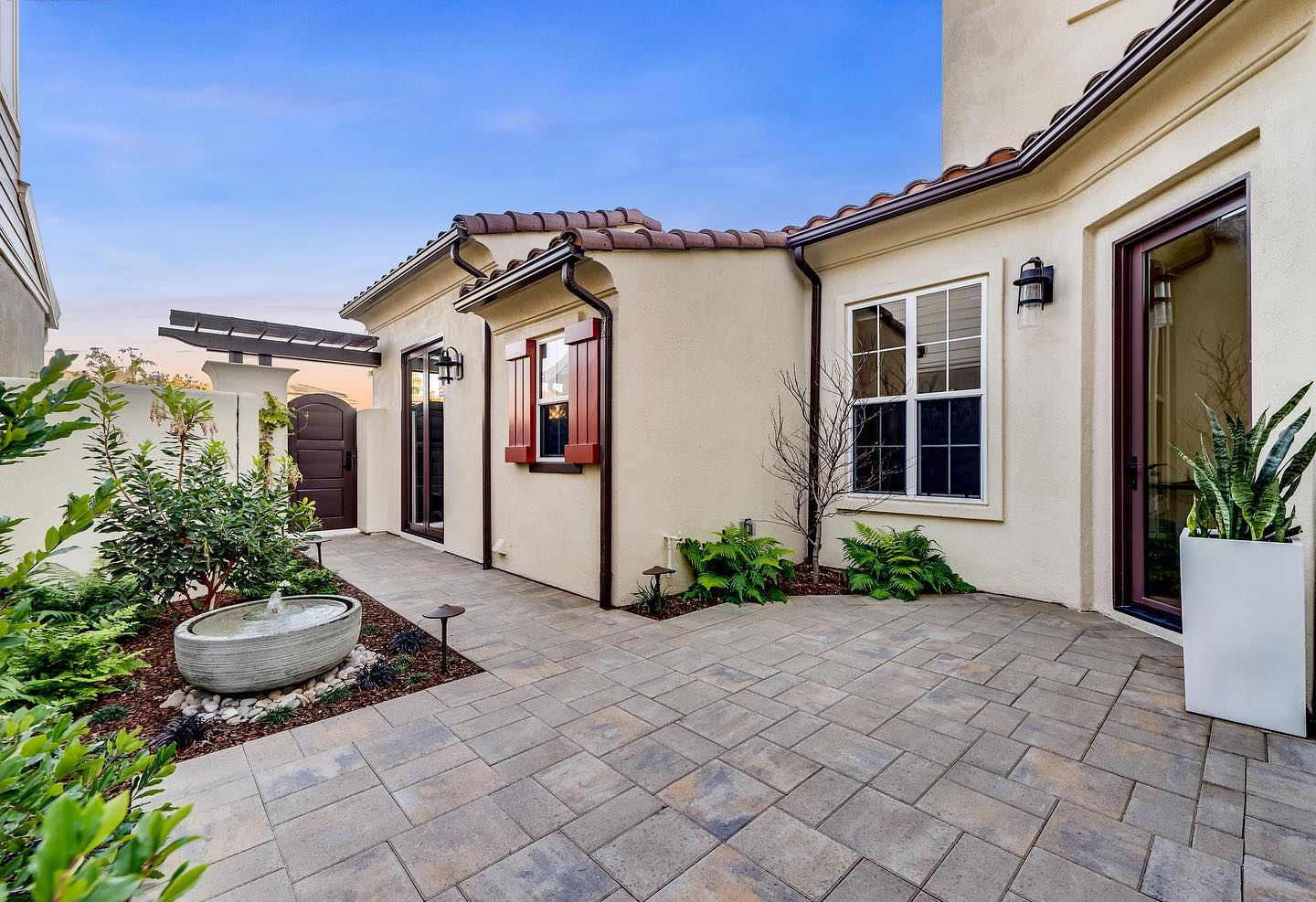
Key Takeaways
Building a wall, whether for your home or garden, might seem like a challenging task, but with the right guidance and tools, it can be simpler than you think. Walls in your backyard patio can serve various purposes - providing structural support, dividing spaces, and enhancing the curb appeal of your property.
From selecting the right materials to ensuring proper measurements, every step requires careful thought and precision. With a well-thought-out plan, you can create a sturdy, functional, and attractive wall. It’s important to have a clear idea of the purpose your wall will serve and the space it will occupy.
In this guide, we’ll walk you through the simple steps of building a wall. Whether you’re a DIY enthusiast or just looking for tips to plan and add accessible spaces in your house, this easy-to-follow guide will help you build a wall that meets your needs.
The first step in building any wall is planning. Start by deciding the purpose of the wall. Is it for dividing a room, adding support, having additional space, or enhancing privacy in your garden?
Once you know the purpose, measure the area carefully. Mark the spots where the wall will stand using stakes or chalk lines.
For example, if you’re building a retaining wall in the garden, make sure the wall will be strong enough to hold back soil. Proper planning helps prevent mistakes and ensures that your wall serves its intended purpose.
Selecting the right materials is essential for building a strong and long-lasting wall. Depending on the type of wall, you might use bricks, concreteConcrete is a composite material made from a mixture of cement, sand, gravel, and water. It is one o... blocks, or natural stones for outdoor walls.
For interior walls, woodWood is a natural, organic material derived from trees, commonly used in landscaping and constructio... framing, drywall, or plaster may be needed. Always use high-quality materials to ensure the wall’s durability.
For instance, if you’re constructing a garden wall, choosing weather-resistant materials like natural stone or concrete blocks is ideal. Quality materials ensure that your wall will withstand the elements and time.
Every wall needs a solid foundation. For outdoor walls, this often means digging a trench and filling it with gravelGravel consists of small, loose, rounded or angular stones, typically ranging in size from a few mil... or concrete to create a stable base.
The foundation prevents the wall from sinking or shifting over time. Make sure the foundation is levelA level is a tool used to determine whether a surface is horizontal (level) or vertical (plumb). It ... and compact before you start building.
For indoor walls, the foundation refers to the framework or studs that support the wall. Ensure that the framework is properly aligned and secured to avoid any structural issues later on.
When building a wall with bricks or blocks, start by laying the first layer carefully. This layer sets the tone for the entire wall, so it’s crucial to ensure it’s level and evenly spaced. Use a level and a string lineA string line, or mason’s line, is a strong, thin cord used in masonry and landscaping to create s... to check that the first layer is straight and aligned properly.
For example, if you're using bricks, apply mortarMortar is a mixture of cement, sand, and water, used as a bonding agent in masonry construction. It ... between the bricks and gently tap them into place. Make sure each brickBrick is a building material made from clay, sand, and water, molded into rectangular blocks and fir... is securely positioned before moving on to the next one. Taking your time with the first layer ensures a strong foundation for the entire wall.
Once the first layer is complete, continue building up the wall. Apply mortar between the bricks or blocks and stack them evenly. Stagger the joints between layers to add strength and stability to the wall. For a retaining wall, you may need to backfill with soil as you build up the height.
For drywall or partition walls, once the framework is set, attach the drywall panels securely to the frame. Use drywall screws to fasten the panels, ensuring that they are flush and smooth.
After the wall is built, it’s time to finish it. For brick or stone walls, this might mean filling in the joints with mortar and cleaning off any excess. For indoor walls, finishing involves sanding the drywall, applying plaster or paint, and ensuring the surface is smooth.
Adding finishing touches, like painting or sealing the wall, enhances its appearance and protects it from damage. If the wall is outdoors, consider applying a weatherproof sealant to prolong its lifespan.
Once your wall is complete, give it a thorough inspection. Check for any weak spots, uneven sections, or areas that need reinforcing. For outdoor walls, ensure that the drainage is working properly and that the wall is securely in place. For indoor walls, check that the structure is solid and that the surface is smooth and even.
If you notice any issues, address them immediately to avoid future problems. A stable, well-built wall will provide years of service and add value to your property.
Maintenance is key to keeping your wall in good condition. For outdoor walls, regular cleaning and sealing can prevent wear from weather and environmental factors. Indoor walls may need periodic repainting or touch-ups to stay looking their best.
If you have a garden wall, keep an eye on any signs of shifting or cracking, and address these issues early to prevent bigger problems later on.
At West Hills Masonry, we specialize in helping homeowners transform their outdoor spaces with beautifully designed patios, gardens, fences and walls. Whether you're looking to create a stylish garden partition or build retaining wallsRetaining walls are structures designed to hold back soil and prevent erosion in landscapes with var... to enhance your landscape, our team has the expertise to bring your vision to life.
Professional hardscape contractors have the experience needed to build strong, durable walls. They understand the intricacies of wall construction, from laying the foundation to ensuring the structure is stable. For example, if you're building a load-bearing wall, a contractor will ensure it meets safety standards and can handle the weight.
We understand the importance of designing walls and partitions that maximize space while complementing the overall look of your backyard patio or garden. Contact us for professional help with your outdoor living space and patios.
 Carlos Gonzales
Carlos GonzalesLocations We Serve
Schedule A Consultation